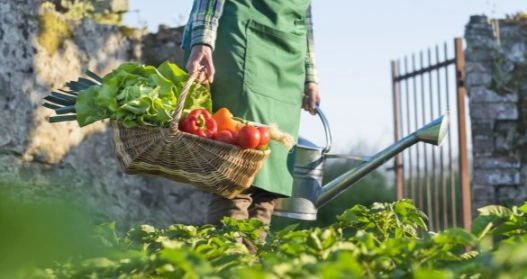How to Grow Plums at Home, from choosing the right variety and planting site, to caring for your plum tree and harvesting your fruits. Whether you want to grow plums for fun, for food, or for profit, this guide will help you get started.
Plums are delicious fruits that can be enjoyed fresh, dried, canned, or cooked into pies, jams, and sauces. They are also rich in vitamins, minerals, antioxidants, and fiber, making them a healthy addition to your diet.
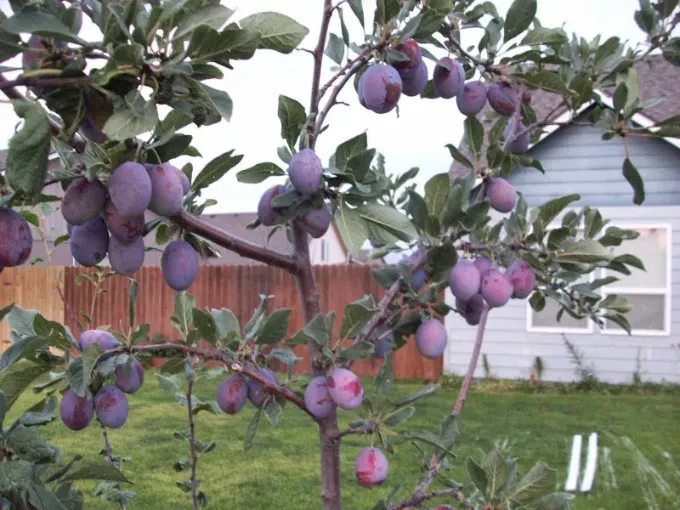
Choosing The Right Variety Of Plum
There are hundreds of varieties of plums, but not all of them are suitable to grow plums at home. Some factors to consider when choosing a plum variety are:
Climate
Plums are generally hardy in zones 5 to 9, but some varieties are more cold tolerant or heat tolerant than others. For example, European plums (such as Damson, Stanley, and Italian) are more cold hardy and can withstand temperatures as low as 20°F.
While Japanese plums (such as Santa Rosa, Satsuma, and Shiro) are more heat tolerant and can thrive in warmer climates.
Pollination
Plums are generally self sterile, meaning they need another compatible variety nearby to cross pollinate and produce fruits. Some exceptions are self fertile varieties, such as Green Gage, Mirabelle, and Victoria, which can produce fruits without a pollinator.
However, even self fertile varieties will benefit from having another plum tree nearby, as this will increase the yield and quality of the fruits.
Size
Plums come in different sizes, shapes, colors, and flavors. Some are large and round, while others are small and oval. Whereas, some are red, purple, or blue, while others are yellow, green, or white. Some are sweet and juicy, while others are tart and firm.
Depending on your preference and space availability, you can choose a plum variety that suits your taste and needs.
Choosing The Right Planting Site For Plum Tree
Once you have chosen your plum variety, you need to find a suitable planting site for your plum tree. Plums prefer a sunny, well drained, and fertile location, with at least 6 hours of direct sunlight per day.
Avoid planting your plum tree in low lying areas, where frost or water logging may damage the roots or buds.
Grow Plums at home, avoid near buildings, power lines, or other trees, as this may limit the growth and spread of your plum tree. Ideally, your plum tree should have at least 15 feet of space around it.
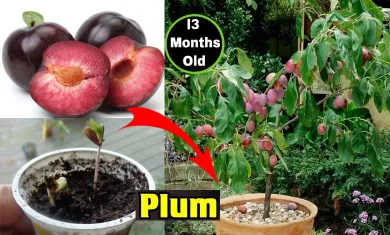
Planting Your Plum Tree
The best time to plant your plum tree is in late winter or early spring, before the buds break. This will give your plum tree enough time to establish its roots and prepare for the growing season. Grow Plums at home, follow these steps:
| Important Steps | Description |
|---|---|
| Dig a Hole | Dig a hole that is twice as wide and as deep as the root ball of your plum tree. Loosen the soil at the bottom and sides of the hole, and mix in some organic matter, such as compost or manure, to improve the soil quality and drainage. |
| Place the Tree | Remove the plum tree from its container or burlap, and gently loosen the roots. Place the plum tree in the center of the hole, making sure that the graft union is at least 2 inches above the soil level. This will prevent the scion from rooting and taking over the rootstock, which may affect the growth and fruiting of your plum tree. |
| Fill the Hole | Backfill the hole with the soil you removed, and gently tamp it down to eliminate air pockets. Water the plum tree thoroughly, and add a layer of mulch, such as wood chips or straw, around the base of the plum tree, to conserve moisture and prevent weeds. Leave a few inches of space between the mulch and the trunk, to avoid rotting or fungal infections. |
| Stake the Tree | If your plum tree is young or weak, you may need to stake it to provide support and stability. Use a sturdy stake that is at least 6 feet tall, and drive it into the ground about 18 inches away from the trunk. Tie the plum tree to the stake with a soft and flexible material, such as twine or cloth, and make sure that the tie is not too tight or too loose. Check the stake and the tie regularly, and adjust them as needed. |
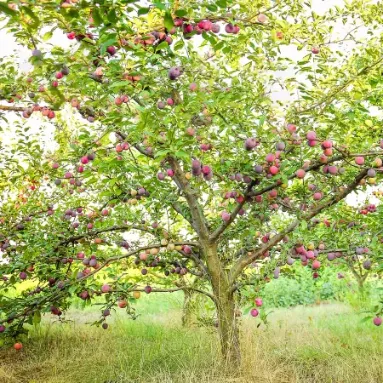
Read Also: Homemade Fertilizer For Palm Trees
Caring For Your Plum Tree
After planting your plum tree, you need to care for it properly to ensure its health and productivity. Here are some tips on how to care for your plum tree:
Watering
Water your plum tree regularly, especially during the first year, when the roots are still developing. The amount and frequency of watering will depend on the weather, soil type, and size of your plum tree.
But a general rule of thumb is to water your plum tree once a week, and more often during hot or dry periods.
You can check the soil moisture by inserting your finger into the soil up to the second knuckle. If the soil feels dry, water your plum tree deeply and slowly, until the water reaches the root zone.
Avoid over watering or under watering your plum tree, as this may cause root rot or drought stress.
Fertilizing
Fertilize your plum tree once a year, in early spring, before the buds break. Use a balanced fertilizer, such as 10-10-10, and apply it according to the label instructions.
You can also add some organic matter, such as compost or manure, to the soil around your plum tree, to enrich the soil and improve its structure.
Avoid fertilizing your plum tree after mid summer, as this may stimulate new growth that may not harden off before winter, and may be damaged by frost.
Pruning
Prune your plum tree once a year, in late winter or early spring, before the buds break. Pruning your plum tree will help to shape it, control its size, remove dead or diseased branches, and improve its fruiting and airflow.
The best way to prune your plum tree is to follow the open center or vase system, which involves creating a main trunk and three or four main branches that radiate from it, forming a vaselike shape.
Remove any branches that are crossing, rubbing, or growing inward, and thin out any branches that are over crowded or shading the lower branches. Cut the branches at a 45 degree angle, just above a bud or a branch collar, and make clean and smooth cuts.
Avoid pruning more than 25% of the plum tree’s canopy in one year, as this may stress the plum tree and reduce its fruiting.
Thinning
Thinning your plum tree will help to prevent over bearing, which may cause the branches to break or the fruits to be small and poor quality. Thinning your plum tree will also improve the size, color, and flavor of the fruits, and prevent diseases and pests.
The best time to thin your plum tree is in late spring or early summer, when the fruits are about the size of a marble.
Remove any fruits that are damaged, diseased, or malformed, and thin out the remaining fruits to about 4 to 6 inches apart, depending on the size of the variety.
You can use your fingers or a pair of scissors to thin your plum tree, and dispose of the thinned fruits properly.
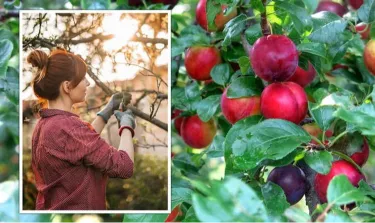
Harvesting Your Plums
The most rewarding part of Grow plums at home is harvesting, your plums and enjoying them fresh.
| Harvesting Tips | Description |
|---|---|
| Best Time | The best time to harvest your plums is depending on the variety, but usually occurs between July and September. |
| By Hand or Scissors | You can tell if your plums are ripe by looking at their color, size, and firmness. Ripe plums will have a deep and uniform color, depending on the variety, and will be plump and juicy. |
| Pressed Gently | They will also give slightly when pressed gently, but not too soft or mushy. To harvest your plums, use your hand or a pair of scissors to cut the stem of the plum. |
| Pulling or Tugging | Avoid pulling or tugging the plum, as this may damage the fruit or the branch. Place the plums in a basket or a container, and handle them carefully. |
| Room Temperature | Store your plums at room temperature for a few days, or in the refrigerator for up to a week. You can also freeze, dry, can, or cook your plums into various dishes, such as pies, jams, and sauces. |
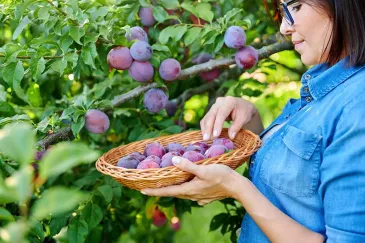
Frequently Asked Questions (FAQ’s)
To grow your own plums, start by selecting a suitable plum variety for your climate. Plant the tree in well-drained soil, ensuring it receives adequate sunlight. Regular watering, pruning, and fertilizing will promote healthy growth and a bountiful harvest.
Plums thrive in temperate climates with cold winters for dormancy and warm, frost-free springs for flowering. They grow best in regions with well-defined seasons and full sun exposure.
The Santa Rosa plum is often considered the easiest to grow, as it is hardy, adaptable to various climates.
Plums typically take about 3 to 5 years to mature and produce fruit after being planted. However, the exact time may vary depending on the plum variety and growing conditions.
Yes, you can grow a plum tree from a branch through a process called “cutting propagation. Take a healthy plum tree branch, remove leaves, dip the cut end and plant it in well-draining soil. Water regularly until roots develop.
The minimum distance between plum trees depends on the specific variety and its recommended spacing. Generally, allow for at least 15 to 20 feet between plum trees to ensure proper air circulation and optimal growth.
Yes, you can control the height of a plum tree through pruning. Regularly trim the branches to maintain the desired height and shape, promoting a healthier tree and facilitating easier harvest.
Conclusion
How to Grow Plums at home is a straight forward and enjoyable process. By choosing the right variety, providing proper care, and being vigilant against pests and diseases. You can enjoy a bountiful harvest of sweet and succulent plums.
Incorporate these tips into your plum growing journey, and you’ll soon be savoring the fruits in your own backyard.

Meet Our Expert Agricultural Administrator
Welcome to agrigreenhands.com, your dedicated hub for all things related to agricultural farming. Leading the way in our commitment to sustainable and innovative practices is Jawad Hussain, our esteemed administrator with a profound background in agriculture….


